Topics
Category
Era
Lake Vermilion–Soudan Underground Mine State Park
The Lake Vermilion–Soudan Underground Mine State Park occupies over four thousand acres in the far northeast corner of Minnesota. The site contains a historic underground iron mine as well as the fifth largest lake in Minnesota and its surrounding habitat.
Archeological evidence suggests that Native Americans lived near Lake Vermilion as early as 7000 BCE. Surviving dugout pits nearby were probably used for storing foods such as maize (corn). The presence of chert and chert chips, used to make sharp-edged tools, indicates that very early people mined in the area. The presence of stones, such as obsidian, that are non-native to Minnesota and from locations in Wyoming and North Dakota, supports the contention that Native Americans lived near Lake Vermilion and traded with other Native people hundreds of miles away. Campsite artifacts like a burned bone and a stone projectile point have been carbon-dated to six hundred years old and five thousand to seven thousand years old, respectively.
In 1882, the first Euro-American miners arrived in the Lake Vermilion area to mine recently discovered iron ore. The discovery led to the development of Minnesota’s first open pit mine (converted to an underground operation soon afterwards) and to the modern tradition of iron mining in the state. Soudan was chosen for the mine's name when a miner commented on how different Minnesota winters were from those in the Sudan region of Africa. When the mine closed in 1962 due to rising production costs, it was the oldest and deepest mine in the state, at 2,341 feet below the surface.
In 1963, the United States Steel Corporation donated the mine, buildings, and surrounding twelve hundred acres to the state to create the park, which merged with Lake Vermilion State Park in 2014. The park is on the south shore of Lake Vermilion in a rugged terrain created by glacial action with a surrounding mixed hardwood and conifer forest. Scenic stands of old-growth pine and exposed rock formations, composed of red jasper, white to pink chert, and gray hematite, capture the visitor's eye.
When touring the underground mine, visitors wear hard hats and ride an elevator down the deepest mine shaft until they are half a mile underground. After climbing into rail cars, they then travel three quarters of a mile horizontally in a space called a drift (a kind of tunnel). Finally, they take a spiral staircase or elevator to an area called a stope (a cavern where the miners blasted and drilled the rock).
The underground mine is also home to a physics research laboratory, which visitors can tour. The mine is useful in particle physics experiments because of its depth, which reduces the potential for protons on the earth's surface to skew test results. In 2016, two projects began to phase out their long-term research, creating an opportunity for future tenants.
A mural measuring twenty-five by sixty feet, created by Joseph Giannetti, decorates the laboratory's rough rock wall. It depicts the universe, scientists, and atomic particles, and explains the science of mining and honors the miners who toiled there.
The park contains several original buildings and pieces of equipment, including the headframe, engine house (1901), crusher house (1904), drill shop (1917), dry house (1925), and machine shop (1925). The dry house, which served as the locker room for the miners and as an office for the mine superintendent, later became a visitors’ center.
Visitors to the park can attend nature programs on topics that range from bats to bees to wild edibles and trees of northern Minnesota. They also can enjoy hiking, biking, geocaching, picnic facilities, camping, shoreline fishing, boating, snowshoeing, and snowmobiling. Several long-distance trail systems run near or through the park and include the Taconite State, Arrowhead, and Mesabi trails.
The diverse habitat of both lakeshore and forest in the park provides a unique opportunity for bird watchers. There have been sightings of over one hundred species of birds, including migrants passing through the park and well-known birds of Minnesota like the loon and eagle.
Mammals in the park include timber wolves, bears, white-tailed deer, beavers, and other smaller animals. After the mine stopped operating, several thousand bats made the underground mine their winter home. This created a hibernaculum, or home for bats—one of the state’s largest. White-nose syndrome, a deadly bat disease present in the mine, is an ongoing concern.
Bibliography
Eliseuson, Michael. Tower Soudan: The State Park Down Under. St. Paul: Minnesota Parks Foundation, 1976.
Kaczke, Lisa. “Work Winding Down on 2 Big Experiments in Soudan Mine.” Duluth News Tribune, February 13, 2016.
https://www.duluthnewstribune.com/news/work-winding-down-on-2-big-experiments-in-soudan-mine
Minnesota Department of Natural Resources. Lake Vermilion-Soudan Underground State Park.
http://dnr.state.mn.us/state_parks/lake_vermilion_soudan/index.html
“Minnesota’s Newest State Park Reaches Important Milestone.” Fox 21KQDS, May 8, 2015.
http://www.fox21online.com/news/local-news/Minnesota-s-Newest-State-Park-Reaches-Important-Milestone/32897194
Minnesota Department of Natural Resources. Soudan Underground Mine State Park Management Plan. January, 2002.
https://files.dnr.state.mn.us/input/mgmtplans/parks/lvsum/soudan-mine-plan-2002.pdf
National Historic Landmarks Survey. National Park Service, Listing of National Historic Landmarks by State.
https://www.nps.gov/subjects/nationalhistoriclandmarks/list-of-nhls-by-state.htm#onthisPage-23
Radford, Dave. “Uncovering History in Our New Park.” Minnesota Conservation Volunteer 77, no. 453 (March–April 2014): 8–17.
Soudan Iron Mine, National Register of Historic Places Inventory Nomination Form, Tower-Soudan State Park, Soudan, Minnesota.
https://npgallery.nps.gov/NRHP/GetAsset/NHLS/66000905_text
Stuntz Bay Boathouse Historic District. National Register of Historic Places Registration Form, Soudan Underground State Park.
https://s3.amazonaws.com/NARAprodstorage/lz/electronic-records/rg-079/NPS_MN/07000460.pdf
University of Minnesota. Soudan Underground Laboratory.
http://www.soudan.umn.edu/
Related Resources
Primary
Axelson, Gustave. "Vision for Vermilion." Minnesota Conservation Volunteer 71, no. 417 (March–April, 2008): 8–17.
Brady, Tim. "Drop into History." Minnesota Conservation Volunteer 71, no. 417 (March–April, 2008): 34–49.
Jackson, Terry. "Soudan Underground Mine Experiments." Hometown Focus, September 12, 2014.
http://www.hometownfocus.us/news/2014-09-12/Features/Soudan_underground_mine_experiments.html
Mesabi Trail.
http://www.mesabitrail.com
Minnesota Department of Natural Resources. Arrowhead State Trail.
http://www.dnr.state.mn.us/state_trails/arrowhead/index.html
Minnesota Department of Natural Resources. Taconite State Trail.
http://www.dnr.state.mn.us/state_trails/taconite/index.html
Ojakangas, Richard W. Roadside Geology of Minnesota. Mountain Press Publishing Company, 2009.
Secondary
Green, Doris. Minnesota Underground & the Best of the Black Hills: A Guide to Mines, Sinks, Caves, and Disappearing Streams. Black Earth, WI: Trails Books, 2003.
Meyer, Roy W. Everyone’s Country Estate: A History of Minnesota’s State Parks. St. Paul: Minnesota Historical Society Press, 1991.
Web
Minnesota Department of Natural Resources.
http://www.dnr.state.mn.us/index.html
Minnesota Department of Natural Resources. Lake Vermilion-Soudan Underground Mine State Park All Season Map.
http://files.dnr.state.mn.us/maps/state_parks/spk00285.pdf
Minnesota Department of Natural Resources. Soudan Underground Mine State Park Bird Checklist.
https://files.dnr.state.mn.us/destinations/state_parks/lake_vermilion_soudan_underground_mine/bird_checklist.pdf
Minnesota Department of Natural Resources. White-Nose Syndrome and Minnesota's Bats.
http://www.dnr.state.mn.us/wns/index.html
UrbanArt. Joseph Giannetti.
http://www.urbanartcommission.org/artists/joseph-giannetti/
Related Images
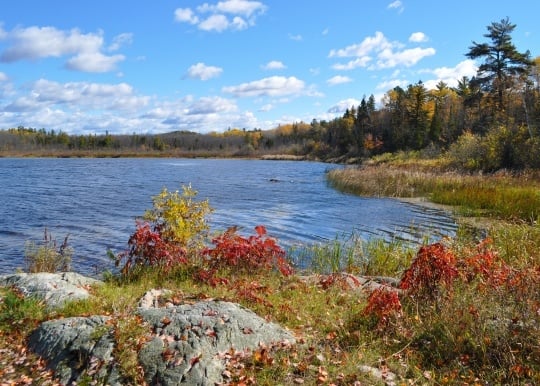
Rocky shoreline in Lake Vermilion–Soudan Underground Mine State Park
Holding Location
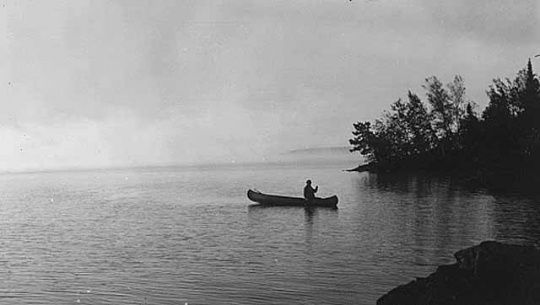
Canoeing on Lake Vermilion
Holding Location
More Information

Soudan Mine headframe
Holding Location
More Information

Underground lunchroom
Public domain
More Information

Soudan Underground Mine physics laboratory
Front face of the MINOS far detector. On the left is the control room; on the right is a mural by Joseph Giannetti.
Public domain
More Information

Soudan Underground Mine sign, level 27

Armstrong Bay day use area
Holding Location
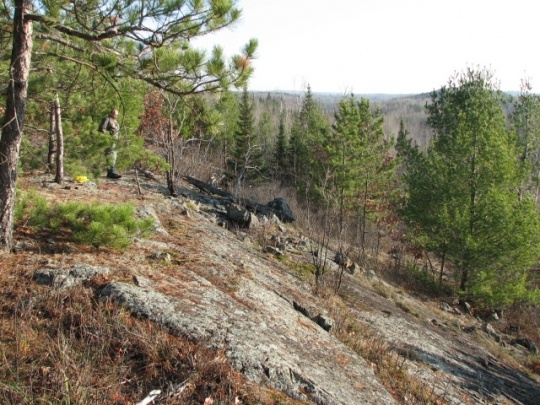
Hiker on rocky hill in Lake Vermilion–Soudan Underground Mine State Park
Holding Location

View of Lake Vermilion
Holding Location
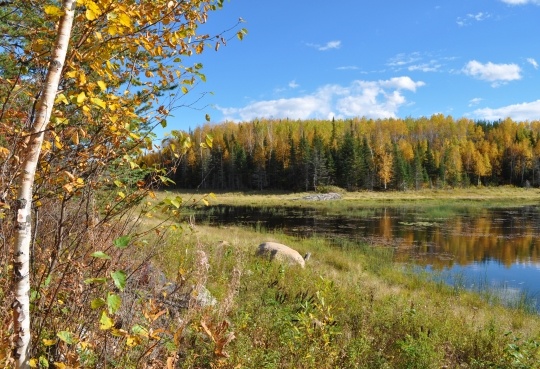
Scene at Lake Vermilion–Soudan Underground Mine State Park
Holding Location
More Information

Beaver dam in Lake Vermilion–Soudan Underground Mine State Park
Holding Location
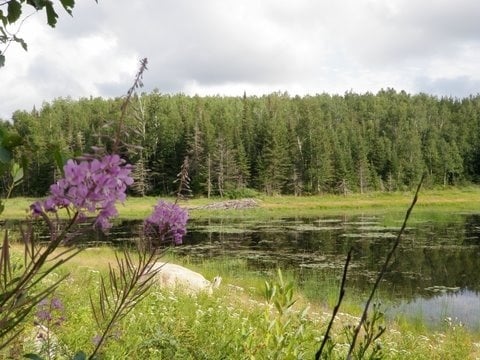
Central beaver wetland complex
Holding Location
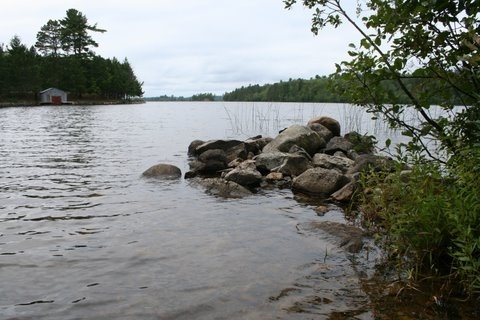
Looking west towards the Stuntz boathouse site
Holding Location

Rocky hillside and Lake Vermilion
Holding Location
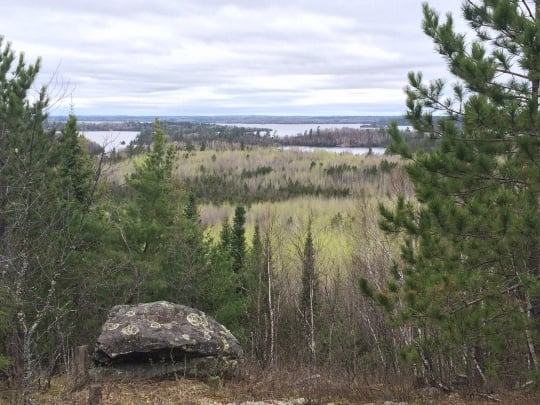
View at Lake Vermilion–Soudan Underground Mine State Park
Holding Location
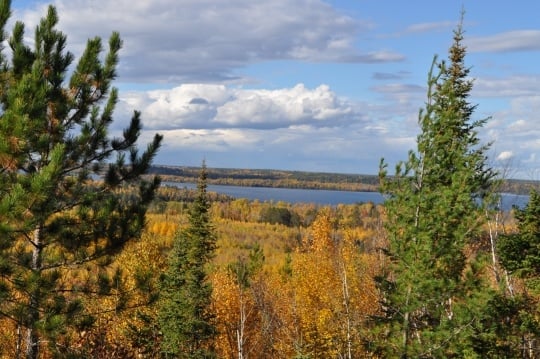
Looking out over Lake Vermilion–Soudan Underground Mine State Park
Holding Location
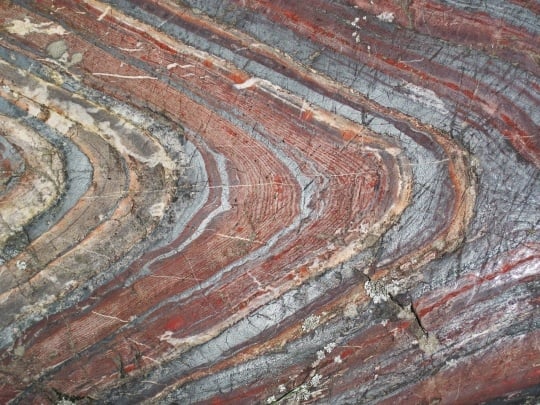
Surface outcrop

Shelter in Lake Vermilion–Soudan Underground Mine State Park
Holding Location
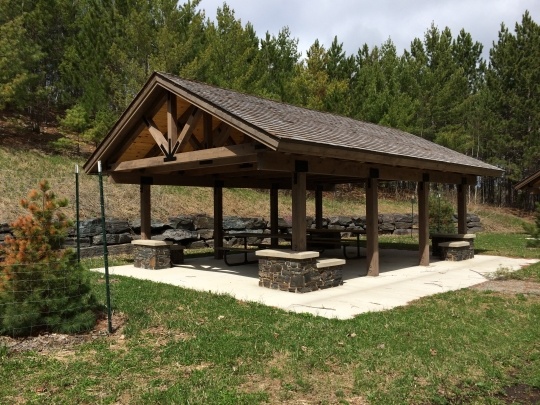
Picnic shelter in Lake Vermilion–Soudan Underground Mine State Park
Holding Location

Stuntz Bay boathouses

Gray sky over Lake Vermilion
Holding Location
Related Articles
Turning Point
In 1963, the United States Steel Corporation donates the Soudan Mine, buildings, and twelve hundred acres of land to the state of Minnesota.
Chronology
As early as 7000 BCE
1882
c.1890
Early 1890s
1962
1963
1966
1979
1980
2002
2007
2010
2014
2015
2016
Bibliography
Eliseuson, Michael. Tower Soudan: The State Park Down Under. St. Paul: Minnesota Parks Foundation, 1976.
Kaczke, Lisa. “Work Winding Down on 2 Big Experiments in Soudan Mine.” Duluth News Tribune, February 13, 2016.
https://www.duluthnewstribune.com/news/work-winding-down-on-2-big-experiments-in-soudan-mine
Minnesota Department of Natural Resources. Lake Vermilion-Soudan Underground State Park.
http://dnr.state.mn.us/state_parks/lake_vermilion_soudan/index.html
“Minnesota’s Newest State Park Reaches Important Milestone.” Fox 21KQDS, May 8, 2015.
http://www.fox21online.com/news/local-news/Minnesota-s-Newest-State-Park-Reaches-Important-Milestone/32897194
Minnesota Department of Natural Resources. Soudan Underground Mine State Park Management Plan. January, 2002.
https://files.dnr.state.mn.us/input/mgmtplans/parks/lvsum/soudan-mine-plan-2002.pdf
National Historic Landmarks Survey. National Park Service, Listing of National Historic Landmarks by State.
https://www.nps.gov/subjects/nationalhistoriclandmarks/list-of-nhls-by-state.htm#onthisPage-23
Radford, Dave. “Uncovering History in Our New Park.” Minnesota Conservation Volunteer 77, no. 453 (March–April 2014): 8–17.
Soudan Iron Mine, National Register of Historic Places Inventory Nomination Form, Tower-Soudan State Park, Soudan, Minnesota.
https://npgallery.nps.gov/NRHP/GetAsset/NHLS/66000905_text
Stuntz Bay Boathouse Historic District. National Register of Historic Places Registration Form, Soudan Underground State Park.
https://s3.amazonaws.com/NARAprodstorage/lz/electronic-records/rg-079/NPS_MN/07000460.pdf
University of Minnesota. Soudan Underground Laboratory.
http://www.soudan.umn.edu/
Related Resources
Primary
Axelson, Gustave. "Vision for Vermilion." Minnesota Conservation Volunteer 71, no. 417 (March–April, 2008): 8–17.
Brady, Tim. "Drop into History." Minnesota Conservation Volunteer 71, no. 417 (March–April, 2008): 34–49.
Jackson, Terry. "Soudan Underground Mine Experiments." Hometown Focus, September 12, 2014.
http://www.hometownfocus.us/news/2014-09-12/Features/Soudan_underground_mine_experiments.html
Mesabi Trail.
http://www.mesabitrail.com
Minnesota Department of Natural Resources. Arrowhead State Trail.
http://www.dnr.state.mn.us/state_trails/arrowhead/index.html
Minnesota Department of Natural Resources. Taconite State Trail.
http://www.dnr.state.mn.us/state_trails/taconite/index.html
Ojakangas, Richard W. Roadside Geology of Minnesota. Mountain Press Publishing Company, 2009.
Secondary
Green, Doris. Minnesota Underground & the Best of the Black Hills: A Guide to Mines, Sinks, Caves, and Disappearing Streams. Black Earth, WI: Trails Books, 2003.
Meyer, Roy W. Everyone’s Country Estate: A History of Minnesota’s State Parks. St. Paul: Minnesota Historical Society Press, 1991.
Web
Minnesota Department of Natural Resources.
http://www.dnr.state.mn.us/index.html
Minnesota Department of Natural Resources. Lake Vermilion-Soudan Underground Mine State Park All Season Map.
http://files.dnr.state.mn.us/maps/state_parks/spk00285.pdf
Minnesota Department of Natural Resources. Soudan Underground Mine State Park Bird Checklist.
https://files.dnr.state.mn.us/destinations/state_parks/lake_vermilion_soudan_underground_mine/bird_checklist.pdf
Minnesota Department of Natural Resources. White-Nose Syndrome and Minnesota's Bats.
http://www.dnr.state.mn.us/wns/index.html
UrbanArt. Joseph Giannetti.
http://www.urbanartcommission.org/artists/joseph-giannetti/






















